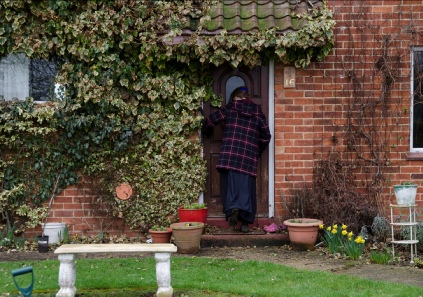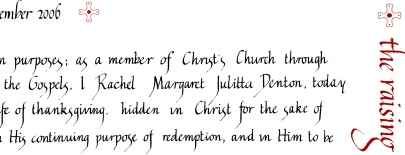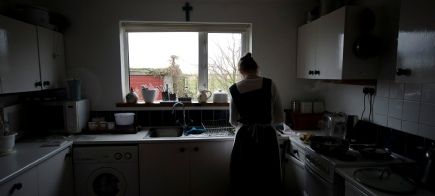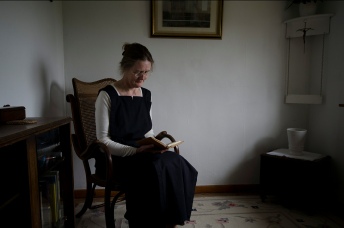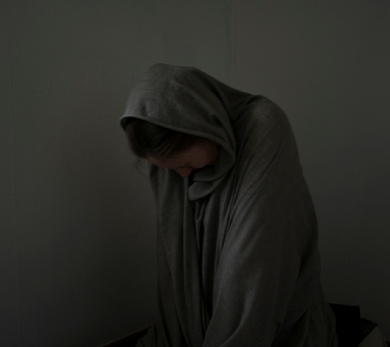S T C U T H B E R T ’ S H O U S E Hermitage of the Diocese of Nottingham
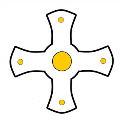
About the hermit
Rachel is a hermit. She lives “in solitude and silence” in a small Lincolnshire village and has taken vows to live as a hermit for the rest of her life.
The eremitical life exists within most world religions; the call to a life of seclusion, spent with God alone, in solitude and silence, has an authentic resonance within almost any faith community. Not everybody is called to the totality of the hermitage, but most people do need at least to touch the edge of solitude, to acknowledge a deep yearning for something beyond themselves, which, try as they might, is never quite satisfied.
Within the Christian church the tradition stretches back to the earliest days of the desert fathers and mothers in the first few centuries AD, when pioneering men and women left their communities to walk into the desert and live there for God alone.
To live as hermit these days seems a strange and outlandish thing – but the reality is surprisingly ordinary. Before I could begin my life here as a hermit of the diocese of Nottingham, I presented the Bishop with a Rule of Life which describes how I would live in the hermitage – it states (amongst other things) a commitment to live in “simplicity, solitude and silence, staying and returning there insofar as duties permit” so I come back to solitude and silence in the same way most people come back to a family.
My Rule of life also states that I will spend time each day in prayer. Without this, my life in the hermitage would become meaningless. 20 years ago I was a novice in a Carmelite monastery. Although I did not stay, I recognised whilst I was there that the most authentic experience I had of God was one of absence - of not experiencing God at all - but that this non-experience was more real, more demanding, more sustaining than any other encounter I had known. Being here keeps me in touch with that, day and day again; this is where I rest, waiting on God.
Lectio Divina
Lectio Divina is a form of prayer which has been practised, particularly by monastics, since before the written word was widely available: Lectio involves a slow, ponderous reading of the scriptures or other spiritual works, until a particular word or phrase speaks directly to the reader; this phrase is then repeated mindfully, explored and savoured, until it reveals something of the fullness of its meaning. It is a way of listening with the heart; listening to God.
Calligraphy has long been practised in monasteries and religious houses as another form of Lectio – the calligrapher puts pen to paper to reveal the identity of the words; to give form to the phrase; to speak something of what is true.
Of course I have to earn my own living. There is not much call for rush mats and rosaries these days – the traditional industries of the hermitage – so most of my income derives from a small calligraphy workshop which I have set up — St Cuthbert’s House. Rather perversely for a hermit, I love words! We live in a society which sells them cheaply, and so they can become cynical or meaningless. Calligraphy is a means of slowing all that down - a way of exploring and valuing the particular form and identity of each word, each phrase.
My style is clean and simple with restrained embellishment, and illustrations are used only to enhance the script. Not all the texts I work with are overtly spiritual in nature however they have all resonated with me in some way. It is a great gift to me when I discover a hitherto unfamiliar or unappreciated verse through a design commission. It becomes a familiar companion in both work & prayer – in a life where companionship might appear to be in short supply, that is not a bad thing to have at all!
